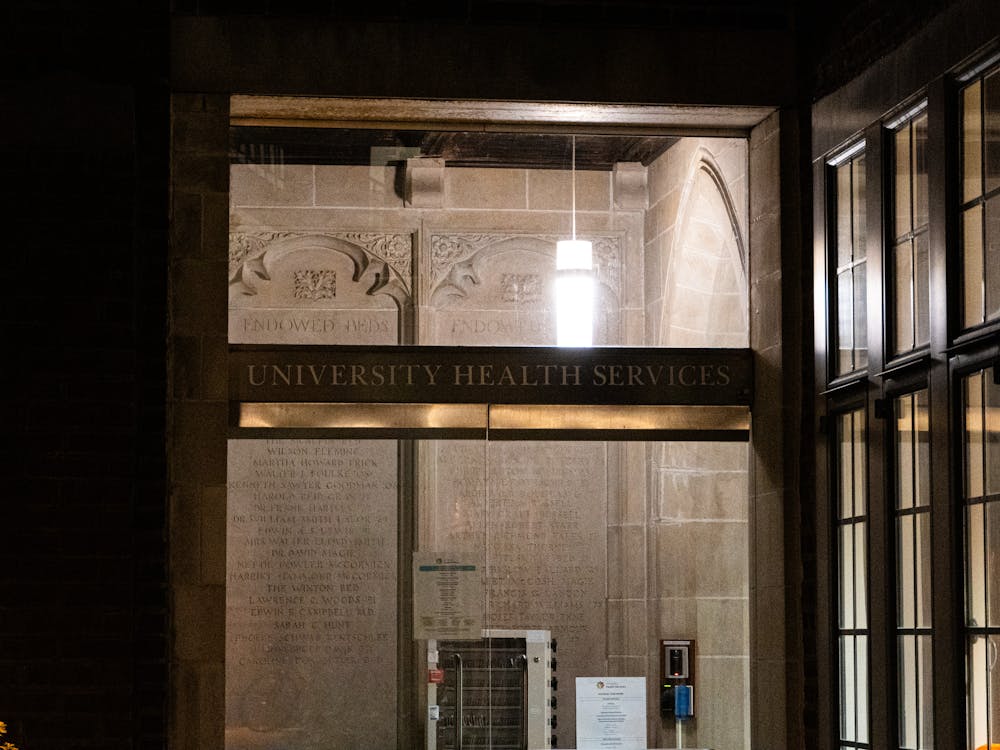After 43 years of helping shape his field and standing up to University administration, geosciences professor Lincoln Hollister will retire this July.
Since his arrival at the University in 1968, Hollister has worked on numerous projects, including a study of the moon rocks collected during the Apollo expeditions and extensive research on the Coast Mountains of British Columbia, an experience that resulted in a theory on the formation of continental crust.
“I’m feeling more and more like a graduate student,” Hollister said of his move towards retirement. “There’s no obligations, there’s no stress ... It’s not having to meet a class three times a week. It’s not dealing with personnel issues or crises of this or that.”
“I’ve been finding that not having to toe the line, basically ‘dance for my supper,’ so to speak, is freedom,” he added.
Hollister has experience toeing the line. He put up an active fight against the University’s decision to close the Guyot Hall Natural History Museum in 2000 and to dispose of its contents when the building was renovated.
“I got the University really upset with me about 10 years ago because we tried to save the Guyot Hall Natural History Museum,” Hollister said. “It was a story of a confrontation between Princeton’s need to spend and accumulate money and the people’s need to learn about natural science, and guess which one lost in a big way.”
Robin Martin ’75, who worked with Hollister on his attempts to preserve the museum, also worked under Hollister on her junior paper and senior thesis.
“It was decided it would be taken down and made offices out of, so he and I were fighting really hard to keep that going, because we thought it was really good to teach kids in the community a little bit about science,” Martin said. “Even if they didn’t end up being scientists, they would have the appreciation of the natural world.”
Though he lost that battle, Hollister said he would like to document his experience sometime in the future regarding his fight with the University over the museum’s fate.
“I feel an obligation to write up that story as a story of the University’s getting off on the wrong path,” Hollister said. “I don’t want to go after anybody like revenge or anything like that.”
He said that he would aim to explain to readers, “This is what happened, these are all the lies that the University told and how they tried to cover up the story.”
“I think the story of how a university deals with values versus money is all there,” Hollister explained.

Several of Hollister’s current projects will be continued after his retirement, he said. He is currently working on addressing “the confrontations between ... environmental nongovernmental organizations and basic science.”
In the past, Hollister has served as an outlet for government employees who could not personally speak out on the issue, he said. He published their findings “without attribution of where [he] got it,” he explained, and is currently working with a retired government employee on an expose about environmental NGOs.
Many of these NGOs have routinely been conducting a “systematic and intentional ignoring of science,” he said.
“All they’re doing is showing pictures of drowning polar bears or something,” Hollister added. “They’re not actually doing anything about the issue, but they’re collecting money from you, and I can prove that.”
Hollister will also continue his scholarly work and is currently working on an article with former students Pam Walsh ’07 and Katy Barnhart ’08. The paper is based on the work of his GEO 314: Igneous and Metamorphic Petrology students in New Mexico and originated from Barnhart’s senior thesis, in which she “found some critical relationships in a couple of her rocks.”
“What it does is explain a large number of rocks in New Mexico that don’t have the critical relationship that she found,” Hollister said, adding that the article will provide insight into the Proterozoic metamorphic history of that region.
Hollister said he also hopes to continue teaching geosciences to those who do not have a background in the field. He is currently working on a geologic guidebook for the Coast Mountains of British Columbia. He was prompted to write something that teachers could “use to explain these wonderful rocks in their backyard” from his work with school teachers in the area, he said.
In September, he will return to New Mexico to lead a Presbyterian retreat to Ghost Ranch. “I’ve taken my classes there for years, so I know the country, and I love it,” Hollister said.
Ultimately, as Hollister noted repeatedly, he would like to share his “enthusiasm for the rocks, for the stories that rocks tell.”
“The story is fascinating, but it’s really difficult to get people wrapped up around it,” he said.







